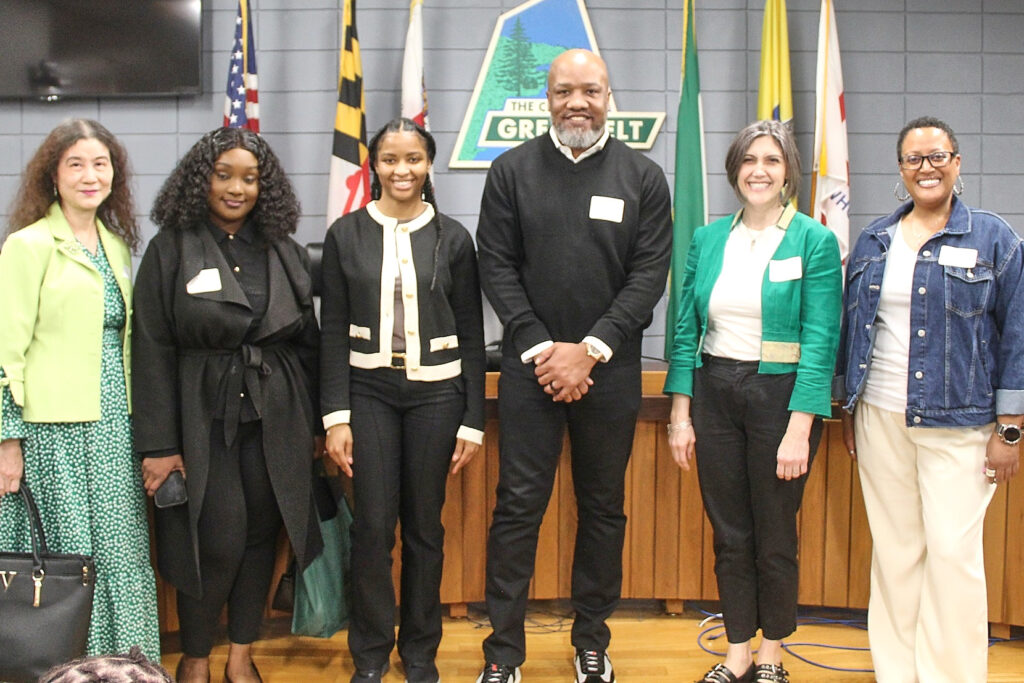During its March 12 meeting, the Greenbelt City Council reviewed the highest priority projects the city has identified for federal grant discussions with our congressional delegation who, at this time of year, considers the competing requests of its constituent municipalities for federal funding in the form of Bonds. This was done without reference to the current federal situation which offers no certainty what funding, if any, will be available.
Additional material from this meeting will be provided in a separate article.
City Manager Josué Salmerón said it was impossible to guess what reception the request to our federal delegation would get. He said their choices would depend on the field of requests and the sense of the delegation about what it should back that had the highest chance of success in the allocations.
Priorities
The top four priorities were 1) improvements to the Greenbelt Museum, 2) an addition to the Springhill Lake Recreation Center (SHLRC), 3) structural remediation at the Com-munity Center and 4) replacement of four community playgrounds. Although all the applications were aimed at the U.S. Department of Housing and Urban Development (HUD) only the museum sought funding from the Historic Preservation Fund. The remaining applications would be to the HUD Economic Development Initiative.
Greenbelt Museum
Salmerón stated that his highest priority was for an additional $300,000 from HUD for the Greenbelt Visitor and Education Center (referred to as the Greenbelt Museum). This would provide matching funds to leverage an additional $300,000 slug of funding from the state – with a goal of $600,000 total in new funding, half federal, half state.
This stirred up considerable comment among councilmembers who questioned its level of priority or if we should ask for funding at all. The Museum comprises two former GHI houses now owned by the city. One unit is renovated to resemble the house as it would have been in 1937 while the other house is not yet renovated to fulfill its purposes which include a variety of supporting functions for the Museum.
Priority
Councilmember Rodney Roberts felt strongly that we should not seek federal money for such projects and instead focus on initiatives that will help people keep their jobs. Councilmember Danielle McKinney commented that she agreed with Roberts – and she proposed that other items on the priority list were more aligned with the potential needs of residents. She wanted to know what the minimum need was for additional funding for the Museum that would avoid losing funds already obtained.
Councilmember Amy Knesel stated that although the museum facility was owned by the city, the Museum was run by a nonprofit organization, Friends of the Greenbelt Museum, that had the capacity to propose for funding on its own behalf. Mayor Emmett Jordan noted that the Museum had used a consultant to help it compete for funding but had so far not been successful on a large enough scale. Roberts noted that the funds weren’t for programs or even to restore the building to its original state. Salmerón explained that though the title of the fund was “Historic Preservation,” its purpose could include educational and programmatic elements other than returning space to its original condition. Roberts was un-moved.
Recreation Facility
The SHLRC project, also on the list for a federal funding request, would not be in competition with the Museum because it is in a different category. Although the entire project has a price tag of $2 to $3 million, the grant request to HUD would be for $750,000 for interior work to the existing facility in preparation for the addition, including repairs and re-mediation where a wall is beginning to detach. The proposed addition would expand space for community activities for all age groups and includes programs for child care; Science Technology, Engineering, and Mathematics (STEM) education; and sports. The city has no funds available for this in the budget.
Community Center
This project would fund repair of part of the addition built in 1967 which is deteriorating.
Playgrounds
The fourth initiative groups four outdated playgrounds, three on city property within GHI’s circumference and the fourth on school board property at Greenbelt Elementary School, for replacement.
Other Projects
Additional candidates (in descending order of preference, likelihood or funding opportunities) were new bathrooms at Buddy Attick Park, upgrades to the club house and picnic areas at Schrom Hills Park, a multisport court at Franklin Park, a new municipal building, an Aquatic & Fitness Center splash pad and field restoration at Greenbelt Middle School.
Discussion of Priorities
Councilmember Kristin Weaver stated she preferred to move the SHLRC improvements into first place ahead of the Museum. She favored promoting better facilities for this area of the city and felt that the Museum could perhaps be assisted to raise more funding itself.
Jordan wanted to check into helping the Museum with its attempts to self fund but didn’t want to lose the funding from the bond. He also wanted to promote the remediation of the Greenbelt Middle School field (now last on the list) to higher in priority as it had been a negotiated initiative with the school system.
Knesel echoed the desire of others to push SHLRC up to the top noting that the report states that “Currently staff struggles to meet the need of participants.”
Councilmember Silke Pope was a proponent of replacing the Buddy Attick Park bathrooms and asked what funding source would be likely to be appropriate for the splash pad facility for small children. Salmerón replied that following last year’s federal guidelines, as they have been told to do as there is, to date, no guidance for this year, there is no category that would cover the splash pad but that it could be funded from Project Open Space if sufficient funds were to be available.
Weaver noted that the splash pad and the bathrooms had previously met with a lukewarm reception from the delegation but Salmerón countered that they had been advised to send everything just in case there was something in there that caught the delegation’s eye or was just the right size.
Roberts asked why we were proposing to replace bathrooms that were only 10 years old. Salmerón replied that the installation was suffering from rust, with the doors and frame particularly affected. Roberts appeared much dissatisfied with the rationale, stating that “it doesn’t cost $500,000 to repair it” and that it “really goes to how we’re maintaining our buildings.”
Although the only clear guidance from the meeting was to increase the priority for SHLRC, Salmerón felt he had what he needed to go forward but expressed his concerns about the Museum – with fewer sources to fund it and the long duration of its evolution – he felt that some review and rethinking might be in order.



